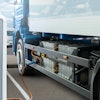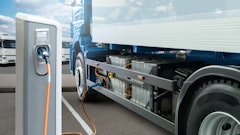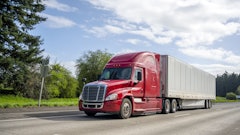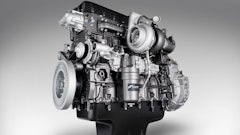Diesel fuel and diesel-powered vehicles may find themselves thrust into the limelight in 2007, thanks to the convergence of several simultaneous events:
- In October, new ultra-low sulfur fuel for on-highway vehicles entered the marketplace with relatively little disruption to price or supply. The new fuel will not only reduce emissions in and of itself, but it also allows manufacturers to use new aftertreatment technologies that will achieve additional, dramatic reductions in emissions, particularly the black soot that has tarnished diesel's image.
- In January 2007, the federal government's new regulations for on-highway vehicles took effect, mandating the use of new "clean diesel" engines, the first significant upgrade in on-highway diesel technology since 2002.
- Rising fuel prices and escalating concern over global warming have increased the public's interest in alternatives to gasoline, including diesel the most energy-efficient fuel.
Introducing the public to "clean diesel"
High gas prices and the introduction of new ultra-low sulfur fuel have given the diesel industry a golden opportunity to reintroduce itself to the public. Most people associate diesel with the smell and smoke from old buses and dump trucks. However, as industry spokespersons are quick to point out, that image is no longer valid: The new on-highway engines reduce emissions by 95% and generate virtually no soot.
In addition, they consume much less fuel than their gasoline-powered counterparts because diesel fuel is 30% more energy efficient than gasoline. With rising gas prices prompting many people to look at hybrid vehicles that use a combination of gas and electric power, diesel manufacturers are moving quickly to get people to give diesel a consideration, as well. Volkswagen and DaimlerChrysler have unveiled several new diesel vehicles to compete against gas-electric hybrids and BMW is expected to follow suit. With diesel-powered cars now accounting for just 3% of new car sales in the United States, they hope to replicate the success they've enjoyed in Europe, where about 50% of all new cars sold are diesel-powered.
Diesel engines and global warming
Diesel fuel may also get a boost from the public's concern over global warming. Diesel-fueled engines emit the fewest greenhouse gases believed to promote global warming, particularly carbon dioxide. In fact, the use of regulations and tax incentives to promote the use of diesel-powered vehicles was one of the principal strategies employed by European countries to meet the requirements of the Kyoto Protocol, an international agreement on global warning.
While the United States did not sign the Kyoto Protocol, it has not escaped the debate over carbon dioxide emissions. The U.S. Supreme Court is currently considering whether the Environmental Protection Agency (EPA) has the authority to regulate carbon dioxide emissions from vehicles and equipment.
Environmental groups and state regulators asked the EPA to draft regulations restricting carbon dioxide emissions from vehicles and power plants, but the agency determined the Clean Air Act and its subsequent amendments did not give it that authority. The U.S. Court of Appeals of the District of Columbia upheld the EPA's decision on a 2-1 vote, which was subsequently appealed to the U.S. Supreme Court.
The court's ruling could have a significant impact on the public's perception of diesel as an environmentally friendly fuel. Carbon dioxide emissions are directly proportional to fuel consumption. Because diesel-powered vehicles consume 30% less fuel than their gasoline-powered counterparts, they emit 30% less carbon dioxide. Diesel also stacks up better than natural gas, LPG and other alternative fuels considered environmentally friendly. While these fuels are considered "clean" they are less energy efficient, which means they generate more carbon dioxide to accomplish the same task as a diesel-powered engine.
Even if the court upholds the EPA decision not to regulate carbon dioxide, diesel may get a boost from state regulations.
California, for example, recently enacted legislation to reduce the state's greenhouse gas emissions 25% by 2020 through regulations and incentives. It requires the California Air Resources Board to develop a plan by 2009 that will achieve the "maximum technologically feasible and cost-effective" reductions in greenhouse gases.
Biodiesel and the demand for alternative fuels
Renewed interest in diesel fuel could have a spillover effect on demand for biodiesel, an alternative fuel that competes with ethanol.
Soybean-produced biodiesel not only has a higher energy content and generates fewer greenhouse gases than corn-based ethanol, but it also provides a net energy gain of 93%, compared to a net energy gain of 25% for ethanol, according to researchers at the University of Minnesota and St. Olaf College. Net energy gain is the amount of energy produced by the fuel less the energy consumed to produce the fuel. The same study also demonstrated that the use of biodiesel reduces greenhouse gas emissions by 41% when compared with gasoline, almost three times greater than the reductions achieved by ethanol.
While biodiesel may be more environmentally friendly, it has limited potential. Even if the United States' entire soybean crop was converted to biodiesel, it would only replace 6% of our diesel fuel needs. That's because an acre of soybeans produces just 70 gallons of biodiesel. By comparison an acre of corn can generate 420 gallons of ethanol while an acre of sugar cane can produce up to 600 gallons.
Lessons for the off-highway market
What does all of this mean for the off-highway market? Increased demand for diesel could impact both price and supply, but any changes are expected to be gradual. For many equipment manufacturers and off-highway users, it will be a game of wait-and-see. How will the new fuel perform this winter and beyond? How will the new engines hold up and how will fuel-efficiency and reliability be impacted?
The primary concern for the off-highway market will be the transition to low-sulfur fuel later this year. Although it will mark the first time that off-highway fuel will be regulated, the transition to 500 ppm fuel is expected to be relatively simple, since it has been used by the on-highway market for several years. The biggest question will be whether some fuel terminals will convert all of their tanks to ultra-low sulfur fuel to prevent potential contamination problems.
The real change for the off-highway market won't come until 2010, when ultra-low-sulfur fuel will be required, and 2011, when the Tier 4 off-highway engines (with much of the same technology as the 2007 on-highway engines) will reach the market. If the off-highway market follows on-highway trends, as it typically does, off-highway equipment manufacturers and dealers can expect a dramatic increase in sales leading up to 2011, as users pre-purchase equipment to avoid the more expensive Tier 4 engines.
How this potential new diesel age evolves remains to be seen. However it is clear that, for the first time in more than a generation, the general public has a golden opportunity to learn about the advantages of this "workhorse" fuel. And that's important, because the more support it has, the less regulators will try to regulate it away.
Dave Jensen is a contributing editor from Milwaukee, WI.
















